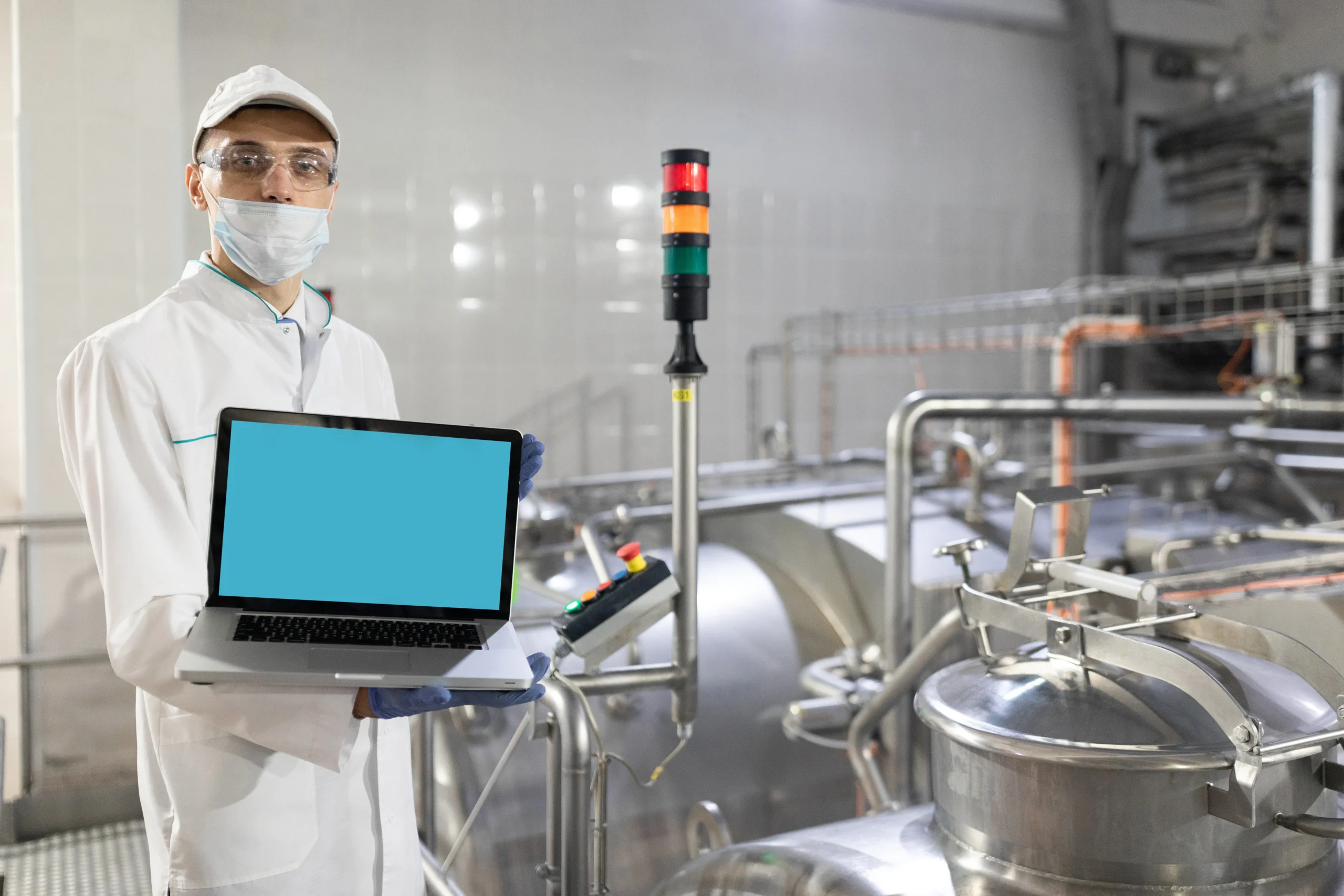Quickly, computer vision is changing the food processing sector and its next generation of solutions are benefiting quality, efficiency, and safety. At least 99% of enterprise visual data is expected to be analyzed by machines by 2025, leading companies in food manufacture cutting recalls by as much as 50%, and operational costs reduced by 30% for food companies that adopt advanced vision systems developed by companies such as Computer Vision Development Company; therefore, there is urgency prompted by the latest competitive advantages to deploy computer vision solutions for business competitors. This post articulates a few applications, advantages, challenges, and future scope for computer vision in food processing.
Computer Vision In Food Processing: Overview
From automated visual inspection to smart sorting, and precision packaging; computer vision leverages AI algorithms – cameras and sensors – to analyze images, and video data at speed in ways and at scales infeasible for human eyes. As demand globally with consumers is for safe, quality food and regulators are taking an even stricter stance within their guidance, the food processing sector is going digital, and data-based transformation is underway. Expert AI Development Services and a viable partner in implementing Machine Learning Development services is fundamental for food processors focused on all aspects of error-free operations that balance quality and consumer growth.
Key Applications of Computer Vision in Food Processing
Computer vision enables the adoption of an array of transformative use-cases by automating processes in every stage of food production.
Quality Control & Inspection
Machine-learning-enabled visual inspection achieves accurate defect detection (e.g., bruising, discoloration, foreign material, etc.) in produce, meats, and baked goods. Assessment of color, size, and texture ensures the highest-quality items reach the consumer and minimizes the recall risk while enhancing brand loyalty.
Sorting & Grading
Computer vision-driven sorting of fruits, vegetables, and grains based on ripeness, shape, and size enables up to 10,000 items to be sorted in line per hour. Grading algorithms allow firms to differentiate premium products from lower-grade products, thus driving accurate inventory management and optimizing revenue per batch.
Packaging Verification
Vision-enabled systems inspect the integrity of packaging, confirm where packaging labels are adhered, and examine expiration dates to ensure compliance and mitigate costly mistakes. These solutions ensure packaging leaks, mislabels, or improper seals are identified, which minimizes the risk of shipment rejections and regulatory fines.
Food Safety & Contamination Detection
Multispectral and hyperspectral imaging enable tested vision systems to target contaminants (pesticides, allergens, foodborne pathogens, etc.), often undetected using typical inspection methods. Likewise, real-time detection ensures the item is removed from the production line, satisfying both consumer safety and regulatory compliance.
Advantages of Computer Vision in Food Processing
Enhanced Quality and Consistency
Automated inspection guarantees that every product adheres to established specifications, eliminating human error and personal judgement – which translates into repeatable quality from one batch to the next. The outcome is improved customer satisfaction and a minimized likelihood of defective products.
Increased efficiency and speed
Vision systems can process images rapidly to support continuous operations (24 hours a day with quick feedback). “The time spent sorting and inspecting products can be reduced, in some cases, by up to 80 percent, improving workflow and throughput.”
Reduce wastes and costs
By identifying negatives and controlling inventory, food processors will reduce giveaway rates, and overproduction, along with the costly impacts of wasted materials and labor. “With full-scale computer vision implementations many solid corporations are now experiencing double-digit reductions in resource costs.”
Improved food safety and traceability
Automated systems for detecting contamination and packing specification verification, improve food safety and food traceability while ensuring compliance with global standards, which also protects brands from the prospect of litigation and reputational damage.
24/7 Operation with unmatched accuracy
Automated answer systems will produce extremely high accuracy rates – much higher than manual checks could achieve. This allows processors to run their systems precisely, without interruption, around the clock, even in high volume processing operations.
What are the Challenges and Considerations of Computer Vision in Food Processing?
There are significant advantages, but food processors encounter some obstacles to successful implementation.
High Upfront Cost
The cost of cameras, sensors, infrastructure, and custom software represents a significant cost that has to be incurred upfront. However, costs will quickly provide return on investment due to reduced ongoing labor cost, many fewer recalls, and reduced waste.
Ability to Train Technical Skills
Organizations will require advanced data science and engineering capabilities to implement programmatically at scale. By engaging with a Computer Vision Development service provider, or other reputable AI Development solutions, companies can approach a programmatic solution and continue to receive feedback to adjust algorithms and handle edge devices.
Data and Algorithm Training
A successful implementation of a Computer Vision example depends on having large, well-labeled datasets, and continuing to train the algorithms in a customized way. Food products will have natural variability which means optimization of models must be done carefully, which is often supported with Machine Learning Development Solutions for adaptation and improved accuracy for separate food products.
Natural Variability of Food Products
Differences in shape, color, and texture between food products can present reliability constraints with the algorithms. More advanced imaging (hyperspectral, infrared, tomographic) and adaptive models are becoming progressively more common to assist with these variance issues and to help maintain consistent inspection standards.
The Future of Computer Vision in Food Processing
The next wave of innovations will entail even better integration and capabilities with smart manufacturing.
Integrating Robotics and AI
Automated inspection platforms will, in continual evolution, integrate robotic installations, AI, and vision systems, to conduct sorting, packaging, and transfer of products with no human involvement—enabling predictive maintenance and dynamic workflow.
New Imaging Technologies (Hyperspectral and X-ray)
Systems will include multispectral imaging and X-ray imaging to provide deep insights into product freshness, ripeness, and possible contamination—enabling non-invasive product quality assessments in real-time and at volume.
Sustainability and Smart Farming
Computer vision-based solutions will allow for intelligent farming, precision agriculture, and resource waste reduction—monitoring crop health, optimizing water use, and limiting environmental impact.
May utilize Predictive Analytics in Real-time
AI systems will provide predictive insights around spoilage ratings, possible supply chain bottlenecks, and market demand which will assist food processors in their decision space to be flexible to change and reduce loss.
Final Thoughts
Computer vision is revolutionizing the food processing industry and enabling manufacturers around the world to achieve quality control, safety, and agility in the process. As adoption speeds up and solutions become more flexible, proactive agents use a reputable Computer Vision Development service provider, top-tier AI Development solutions, and leading Machine Learning Development solutions to optimize value. Food processors are overcoming technical, operational, and data hurdles while ensuring resilient, effective, and safe performance for the future of food.


